



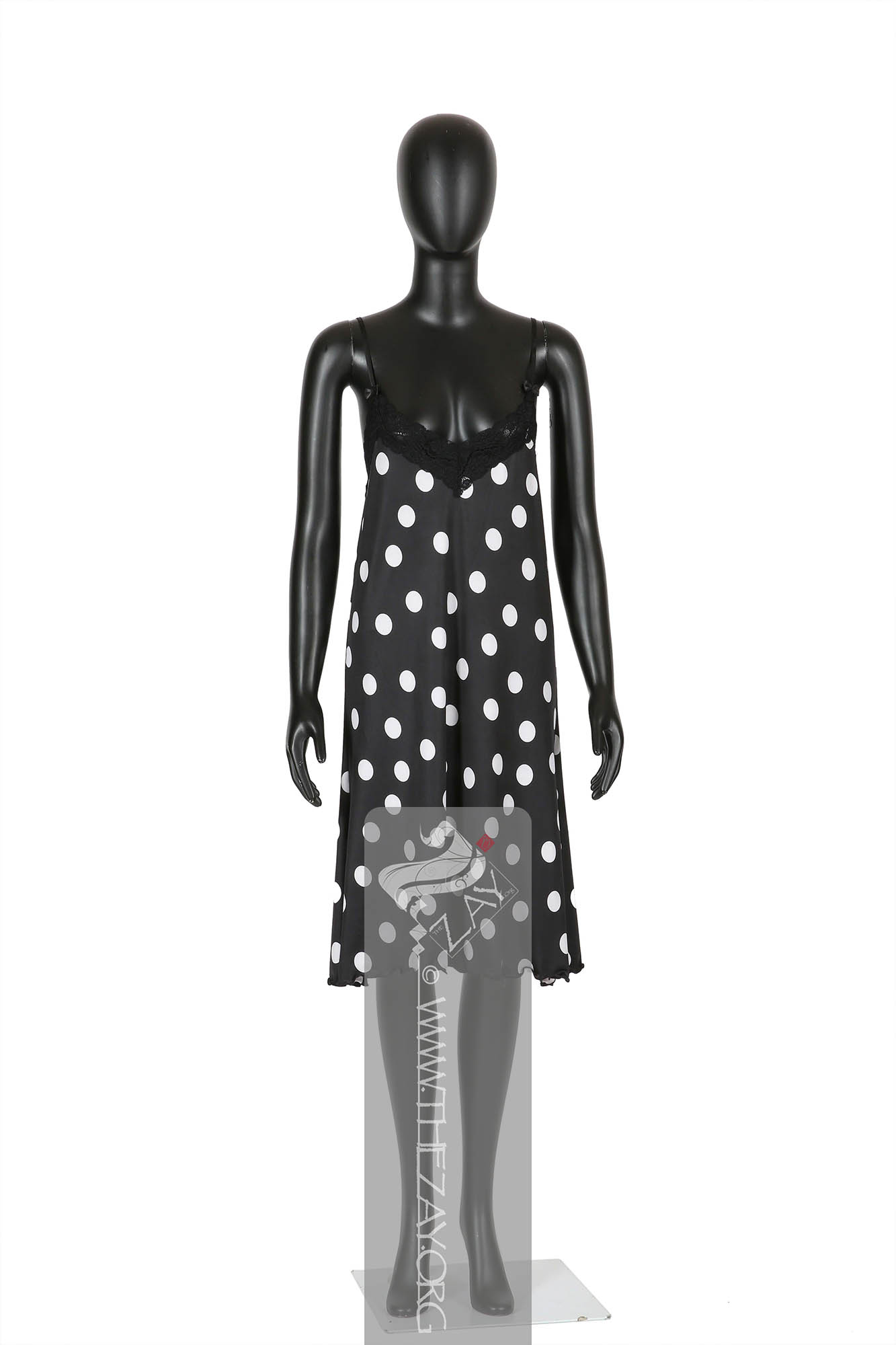
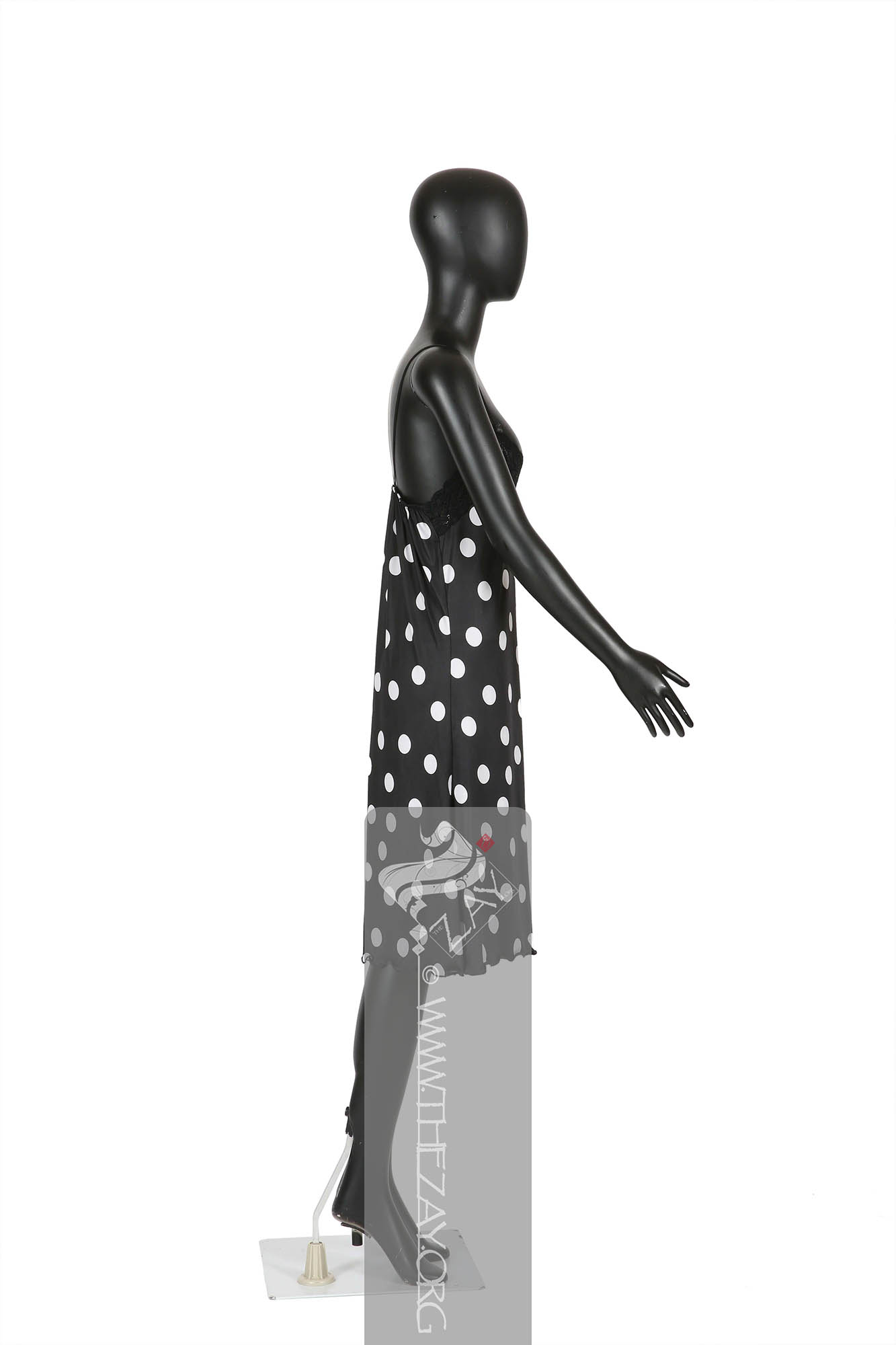

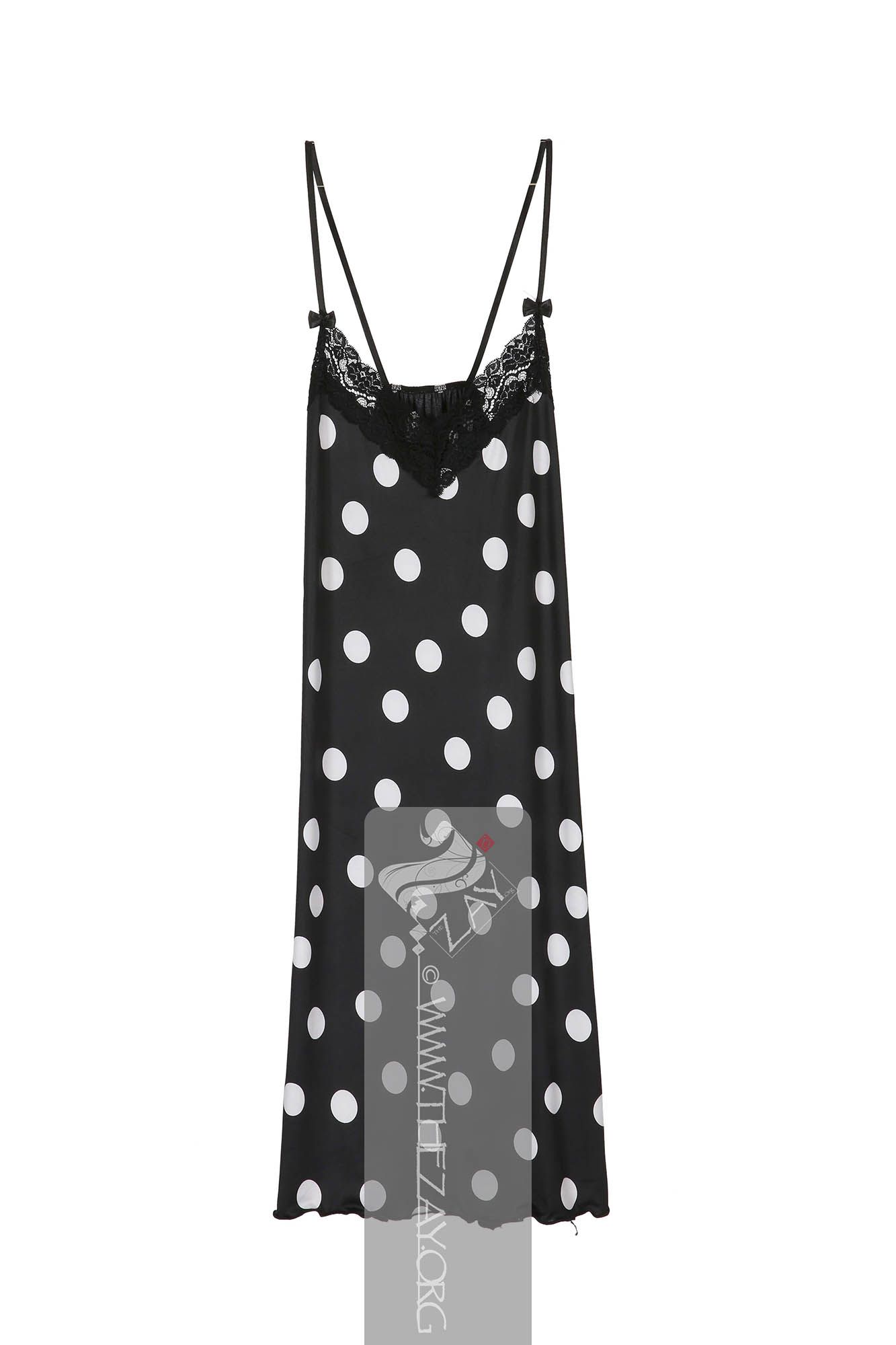
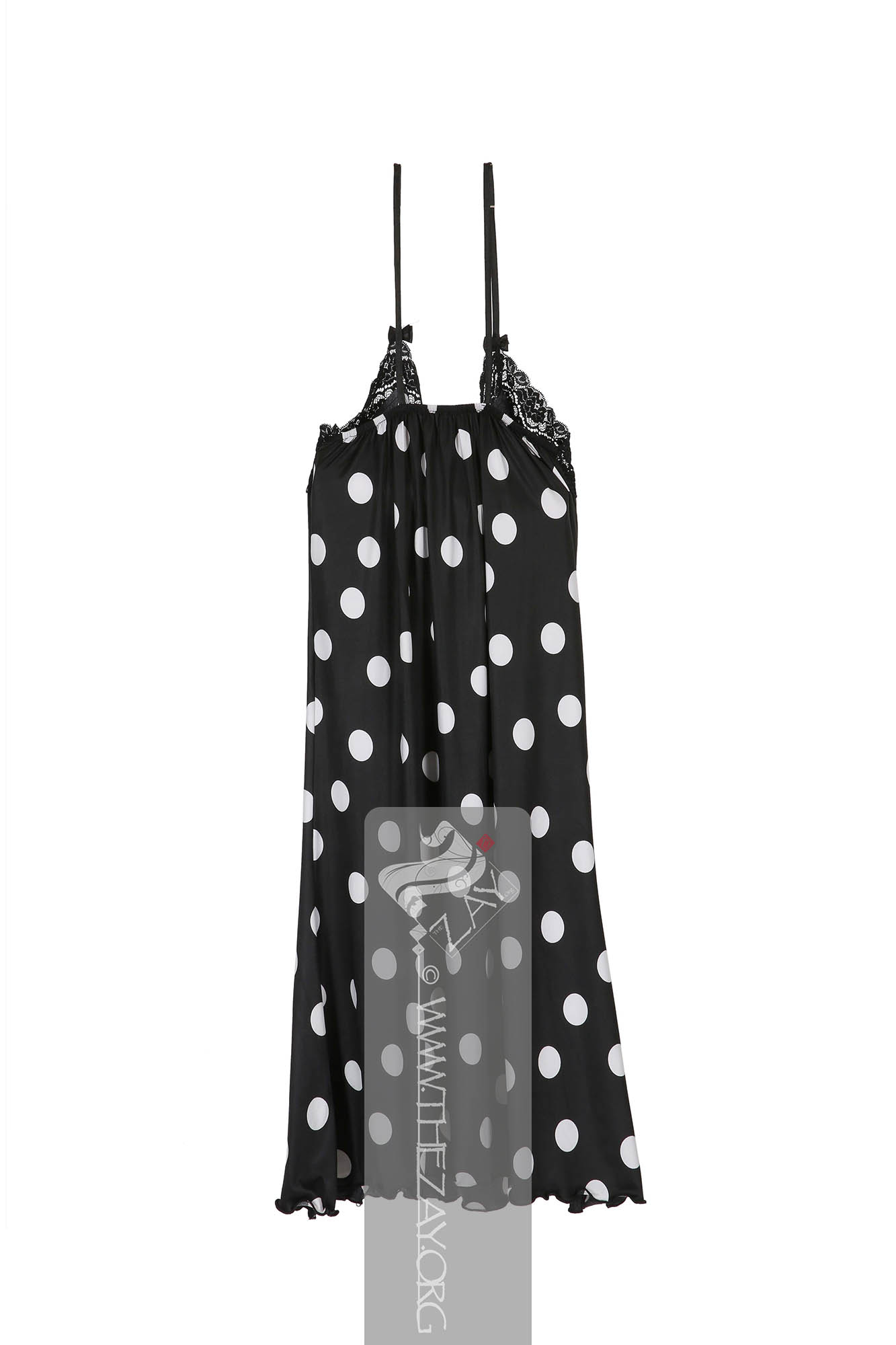
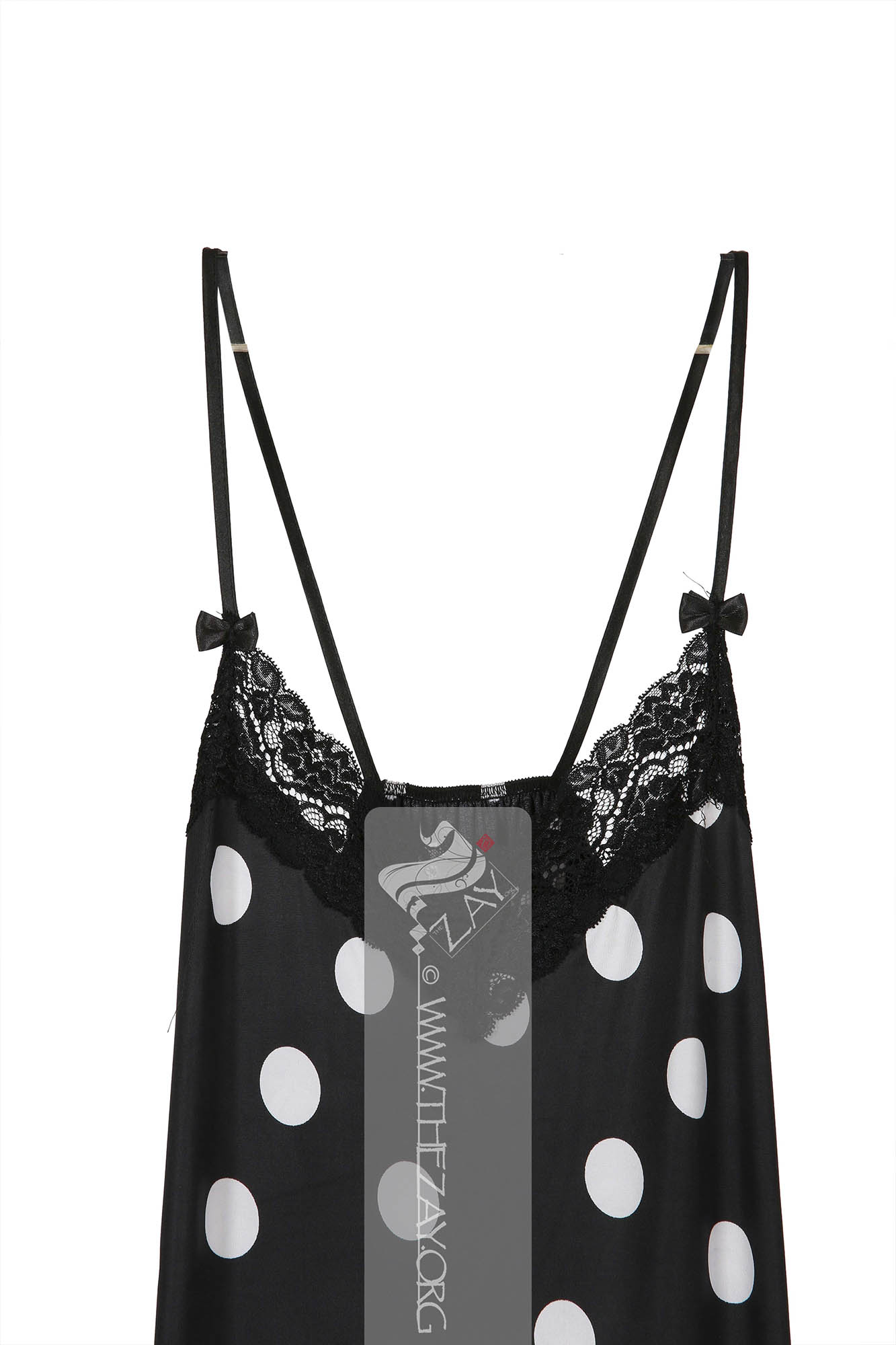
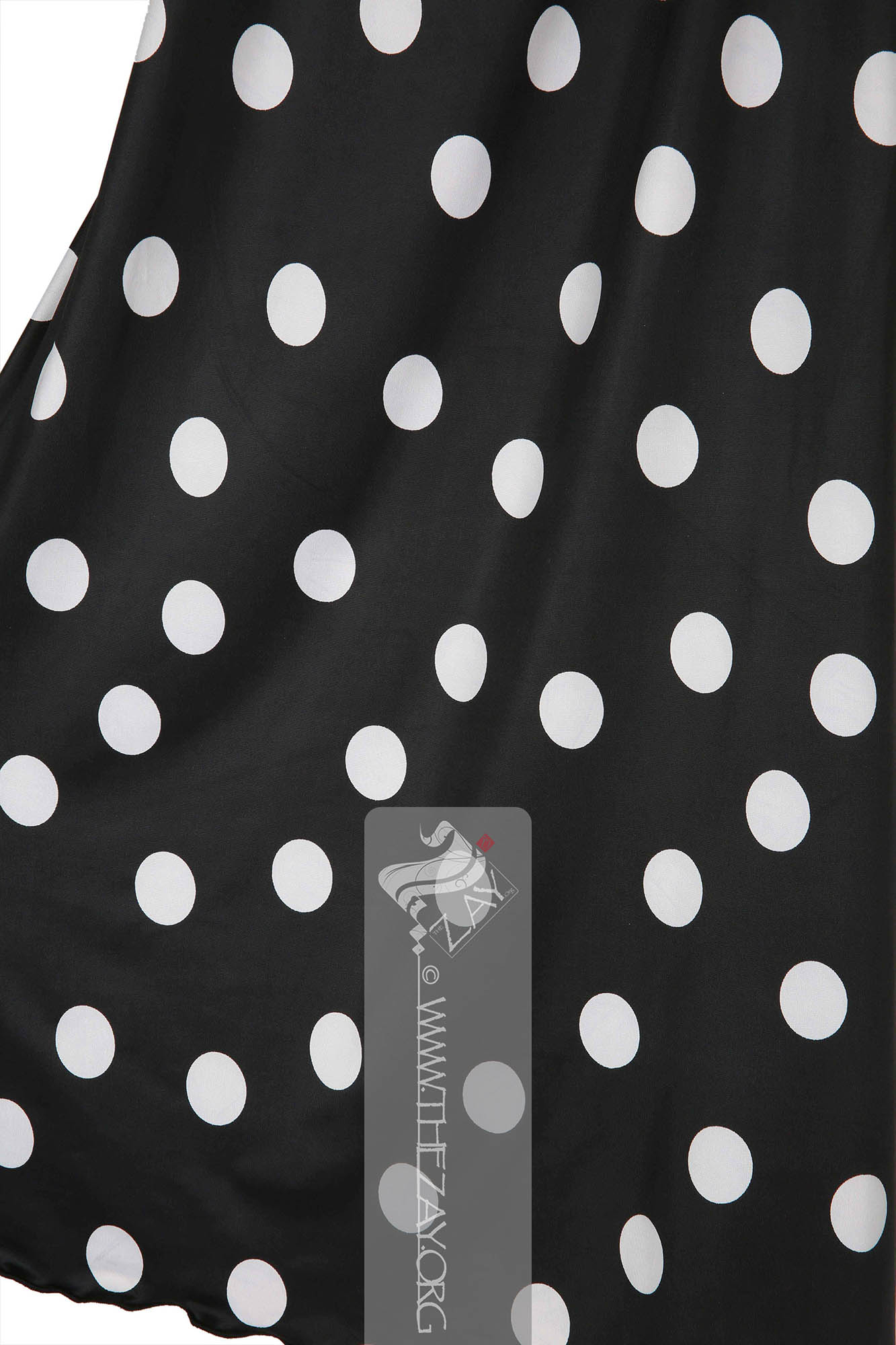

| Local Name | Gömlek |
| Object Category | Undergarment |
| Gender | Female |
| Date of object | c. 20th century |
| Place Of orgin | Iraq |
| Region | Iraq |
| Object Range | Iraq |
| Dimensions | Length: 99 cm Width: 42 cm |
| Materials | Silk Other |
| Technique | Machine Stitched Print |
| Color | |
| Motif | Geometric Abstract |
| Provenance | Gifted, Amah Salimah, 1984 |
| Location | The Zay Zay: (Arabic: costume, Pl. azyaā’), a set of clothes in a style typical of a particular country or historical period. Initiative |
| Status | In Storage |
| ZI number | ZI1984.500916.1a IRAQ |
Object Features
This is a woman’s knee-length slip or chemise (gömlek
Gömlek: (Proto-Turkic: köyŋelek – Shirt; Azerbaijani: köynək – Shirt; Turkmen: koynek – long loose tunic dress), a traditional calf-length sleeved undershirt or tunic generally made of a plain white cotton, silk, or linen fabric, some more lightweight than others, worn by both Ottoman men and women of all communities throughout the empire. ) often worn as an undergarment with the front open robe (sayah
Ṣāyah: (Classical Persian: sāya – shadow; Synonyms: zubūn, qumbāz, gombaz
Gombaz: (Arabic; Synonyms: sayah, zubūn, qumbāz, yalak
Yalak: (Ottoman Turkic: yelek – a hip or waist length vest; from Old Anatolian: yélek – Vest), a short-sleeved waistcoat traditionally worn by men and a long outer robe or tight jacket either sleeveless or short sleeved with a tight bodice traditionally worn by women in the Ottoman controlled Levant. Yalak: (Ottoman Turkic: yelek – a hip or waist length vest; from Old Anatolian: yélek – Vest), a short-sleeved waistcoat traditionally worn by men and a long outer robe or tight jacket either sleeveless or short sleeved with a tight bodice traditionally worn by women in the Ottoman controlled Levant.
The gömlek Gömlek: (Proto-Turkic: köyŋelek – Shirt; Azerbaijani: köynək – Shirt; Turkmen: koynek – long loose tunic dress), a traditional calf-length sleeved undershirt or tunic generally made of a plain white cotton, silk, or linen fabric, some more lightweight than others, worn by both Ottoman men and women of all communities throughout the empire. displays a wide V-shaped lace neckline and a pair of black silk ribbon straps. The bottom hem of the chemise has a scalloped finished hem. The field of the piece displays large white repeats of polka dots.
Iraq, located south of Türkiye, was a significant Arab territory under the rule of the Ottoman Empire for approximately four centuries. In the northern province of Mosul, which was then under Ottoman rule, the prevalent modes of dress were heavily influenced by the fashion trends originating in Istanbul.
Links
Charuga: (Possibly Kurdish), a mantle-like embroidered women’s traditional garment from the Qaraqosh region in northern Iraq, traditionally fastened at the shoulder. Historically worn by field workers, it helped conceal dust and dirt, making them less visible during labour, it is a festive garment worn sparingly during festivals and other special occasions.
from Northern Iraq Has Arrived at the TRC!, www.trc-leiden.nl/trc/index.php/en/blog/1378-the-charugaCharuga: (Possibly Kurdish), a mantle-like embroidered women’s traditional garment from the Qaraqosh region in northern Iraq, traditionally fastened at the shoulder. Historically worn by field workers, it helped conceal dust and dirt, making them less visible during labour, it is a festive garment worn sparingly during festivals and other special occasions.
-from-northern-iraq-has-arrvied-at-the-trc. Accessed 29 Jan. 2024.